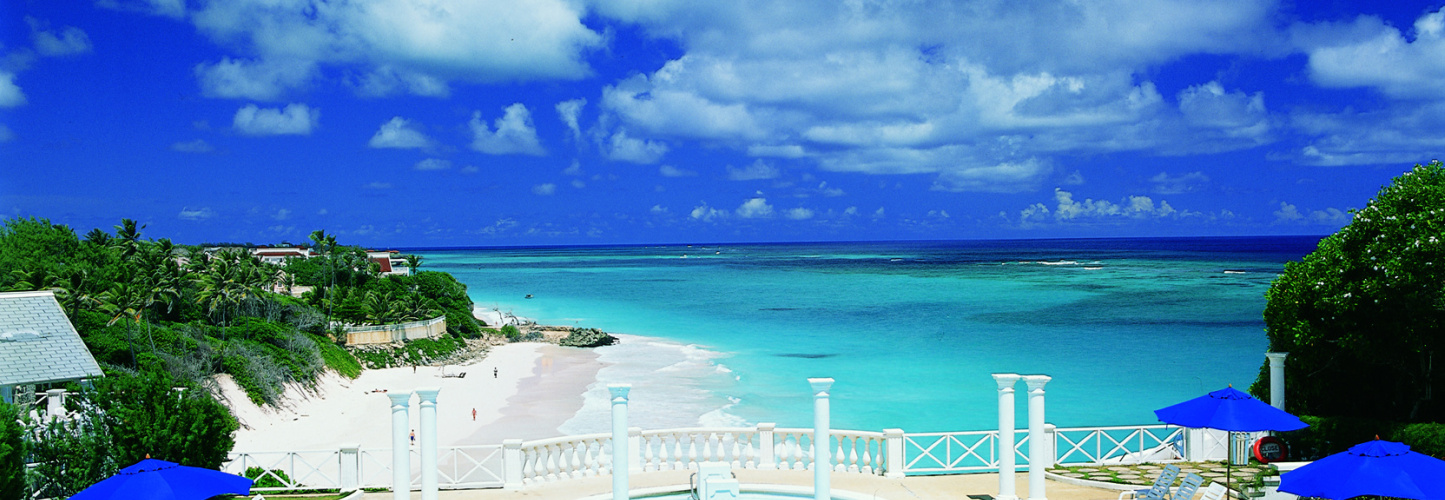Speightstown is on the northern end of the popular west coast of the island. It was the first major port and commercial centre of Barbados. When Bridgetown developed as the British set up their military headquarters at the Garrison on the south west coast of the island, trade in the north dwindled and Speightstown fell into disrepair and neglect. Over the past few years as development has moved north from Sandy Lane and Holetown it has now been revived and is the home of a luxury marina development – Port St. Charles – and a number of exciting initiatives. There are excellent hotels and restaurants in the area as well as an art gallery, and some fine examples of original Barbados architecture.
Speightstown was formally settled around 1630 and in the earliest days of settlement was Barbados’ busiest port. Ships laden with sugar and other commodities left Speightstown bound directly for London and especially Bristol. For this reason Speightstown is sometimes known as Little Bristol. The quaint town has now become the centre of a tourist area as well as a secondary shopping centre.
The area of Speightstown was the first major port and commercial centre of Barbados. The city is named after William Speight, a member of Barbados’ first Assembly during the colonial years as well as the former land owner where the city is located. It has a long and colourful history reaching back to the 17th century when it served as one of the main ports connecting the island with the “mother country,” England. Back then Speightstown was sometimes called “Little Bristol” because of these trading connections with Bristol in England. This little village was the port that Ayscue could not take, when dispatched by Cromwell to quell the insurrection in Barbados in 1649. The Barbadians were loyal to Charles I, and would not accept Oliver Cromwell as their protector. For six months Ayscue was unable to land in Barbados, and concentrated attacks on Speightstown were repelled by the small forts along the shore.
The tiny island was landed only with the help of a defector who led Ayscue and his men to land at Oistins Town where they met with representatives of the island and signed what has become known as the “Charter of Barbados”. Signed in 1652, the agreement gave Barbados rights and privileges unheard of in any other Island. In particular it guaranteed that Barbados could not be taxed without the consent of a Barbados General Assembly.
Many historic buildings dating from colonial times, including Arlington House, still remain standing in the town and can be seen mostly along Queen Street, Church Street and Orange Street. Speightstown saw a lot of activity during the reign of the sugar industry and the day of the slave trade. Many slaves would have passed through this town, even if they were to be shipped on further to other islands or America.
Culture
There is a lot of activity in Speightstown particularly on weekends when locals and visitors come out to do their shopping and banking. Many stalls can be found along the streets hawking local and imported fruits and ground provisions. Falling into disrepair and neglected over the years it has now been revived and is on stream for a number of exciting initiatives. There has been a redevelopment of the Speightstown Esplanade (Fort Denmark) and the Fisheries Complex. There has been some significant work to the drainage of the area with the Salt Pond being adjusted to allow for the flow of water from the sea. The jetty has been rebuilt and there is the talk of resurrecting the Bridgetown to Speightstown Schooner Route as a modern ferry line.
Speightstown is also home to Port St. Charles, a luxury marina development. One of the last archaeological sites on Barbados with undisturbed remains of a large pre-columbian settlement was eliminated for the inlet. Now those who wish to enter the island by yacht and other vessels can dock and be processed for entry here. Due to its distance from the capital, it carries an air of a more bohemian lifestyle. Also to be found in close proximity to Speightstown are excellent hotels and restaurants. There is an excellent art gallery, The Gallery of Caribbean Art, http://www.artgallerycaribbean.com/ which showcases some excellent local and Caribbean artists.
Actress Claudette Colbert spent six months annually in Speightstown after her retirement. Athlete and actor Oliver Skeete was born in Speightstown.
Sister Cities
Speightstown has been twinned with Reading, Berkshire, United Kingdom (since 2003) as well as the City of Charleston, South Carolina, the original parts of which were based on the plans of Barbados’s capital city Bridgetown. Many dispossessed indigo, tobacco and cotton planters departed from Speightstown, along with their slaves, and helped found Charleston after there was a wholesale move to adopt sugar cane cultivation in Barbados; a land and labour intensive enterprise which helped usher in the era of Trans-Atlantic Slave Trade in the British West Indies.





